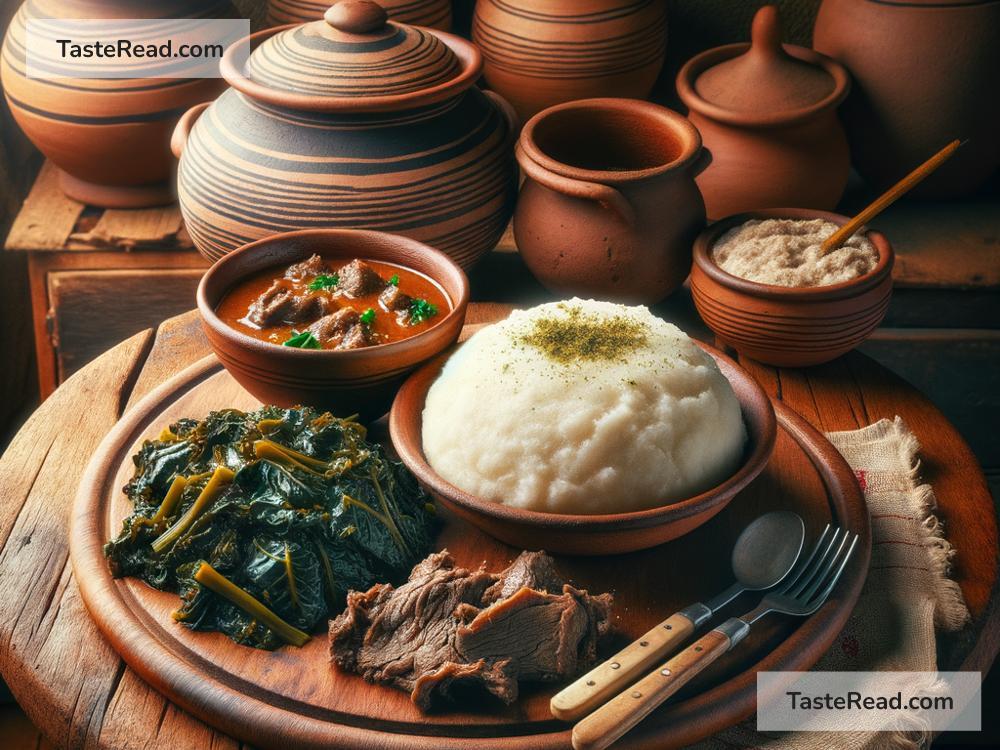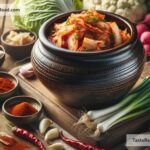The Heart of Kenyan Cuisine: Ugali and Its Role in Everyday Meals
Kenya is home to vibrant cultures, breathtaking landscapes, and mouthwatering food. When you think of Kenyan cuisine, one dish immediately comes to mind—ugali, the country’s most beloved and iconic staple. Ugali isn’t just food; it’s a symbol of unity, nourishment, and tradition. In this blog, we’ll explore what ugali is, how it’s made, and the vital role it plays in everyday meals for Kenyan families.
What is Ugali?
Ugali is a simple dish made from maize (corn) flour and water. It’s a thick, dough-like consistency that serves as the main carbohydrate for many Kenyans. In some regions, other grains like millet or sorghum may be used to make variations of ugali, but maize is the most common ingredient. It’s affordable, filling, and incredibly easy to prepare.
The simplicity of ugali means its flavor needs to shine through the foods it’s served with. While ugali itself is not highly seasoned, it acts as the perfect base for richer and more flavorful accompaniments, such as vegetables, meat, fish, or stew.
How Is Ugali Made?
Preparing ugali only requires two basic ingredients: maize flour and water. Here’s a quick outline of how it’s made:
- Boil Water: Start by boiling water in a pot.
- Add Maize Flour: Once the water is boiling, maize flour is gradually added, while stirring constantly to avoid lumps.
- Mix and Cook: As the flour mixes with the water, it forms a thick consistency. Stir and press it against the pot’s sides until it’s smooth and firm.
- Final Touch: Continue cooking and stirring for a few minutes. When the ugali pulls away from the sides of the pot and no longer sticks, it’s ready.
- Serve: Ugali is usually shaped into a mound or loaf-like form and served hot.
Ugali is traditionally eaten by hand and doesn’t require utensils. You simply tear off a piece, mold it into a small scoop, and use it to pick up other food on your plate.
Ugali in Everyday Life
Ugali isn’t just a food; it’s part of Kenyan identity. It is usually served as the centerpiece of meals and has deep cultural and social ties. Here’s why it’s so important to everyday life in Kenya:
-
Affordable and Filling
Ugali is one of the most economical dishes to prepare, which makes it a staple for households across Kenya. Maize flour is widely available and affordable, and just a small portion of ugali provides enough energy to sustain people throughout the day. For many families, especially those with low income, ugali is the backbone of their daily diet. -
Versatile
Ugali pairs well with nearly anything, making it a versatile addition to the plate. Among popular pairings are sukuma wiki (collard greens), beef stew, chicken, fish, and even sour fermented milk. Whether you’re having a simple vegetable dish or a feast with several accompaniments, ugali fits naturally into the meal. -
A Symbol of Togetherness
In Kenyan households, meals are often shared among family members. Ugali is served in a communal setting where everyone gathers around the table or floor and enjoys food together. The act of eating ugali with your hands fosters a sense of closeness and connection that goes beyond just nourishment. -
Cultural Significance
Ugali carries cultural importance and represents resilience, simplicity, and identity. For many Kenyans, it’s not just food—it’s the “real meal.” No matter how elaborate a dinner might be, if ugali isn’t on the table, it might be considered incomplete by some.
Ugali Variations and Regional Preferences
Depending on where you go in Kenya, you might find slight variations in ugali and what it’s paired with. For example, along the coast, it may be enjoyed with coconut-infused fish curry, whereas in Western Kenya, it’s often paired with omena (tiny dried fish), fried chicken, or vegetables. In some communities, millet or sorghum may replace maize flour to make a darker, more nutrient-rich version.
Ugali Across Generations
Ugali has been enjoyed for generations in Kenya, and it continues to hold a place of pride in the nation’s dietary habits. It is also an essential part of many ceremonies and gatherings. For instance, weddings, birthdays, or even casual get-togethers with friends often involve ugali as part of the meal. It’s food that unites people over conversation and laughter.
In recent years, Kenyans living abroad have found ways to keep the tradition alive, using maize flour available in foreign supermarkets or using substitutes when necessary. Ugali represents home for many, no matter where they are in the world.
The Future of Ugali
With its importance firmly rooted in Kenyan culture, ugali is here to stay. Efforts are underway to diversify its nutrient profile by introducing fortified maize flour to combat malnutrition. This ensures ugali continues to nourish future generations while remaining affordable and accessible.
Conclusion
Ugali is more than just a dish; it’s the soul of Kenyan cuisine. Its simplicity, versatility, and cultural significance make it more than just food—it’s part of Kenya’s heritage. Whether paired with sukuma wiki, nyama choma (grilled meat), or fish curry, ugali holds a special place in the hearts and homes of Kenyans.
If you ever visit Kenya, be sure to try ugali—it’s not just a taste of the country, but a taste of tradition, family, and togetherness. It may seem simple, but its role in Kenyan life is powerful and profound. Once you take a bite, you’ll understand why ugali is not just a meal; it’s a way of life.
What’s your favorite way to enjoy ugali? Let us know in the comments below!


